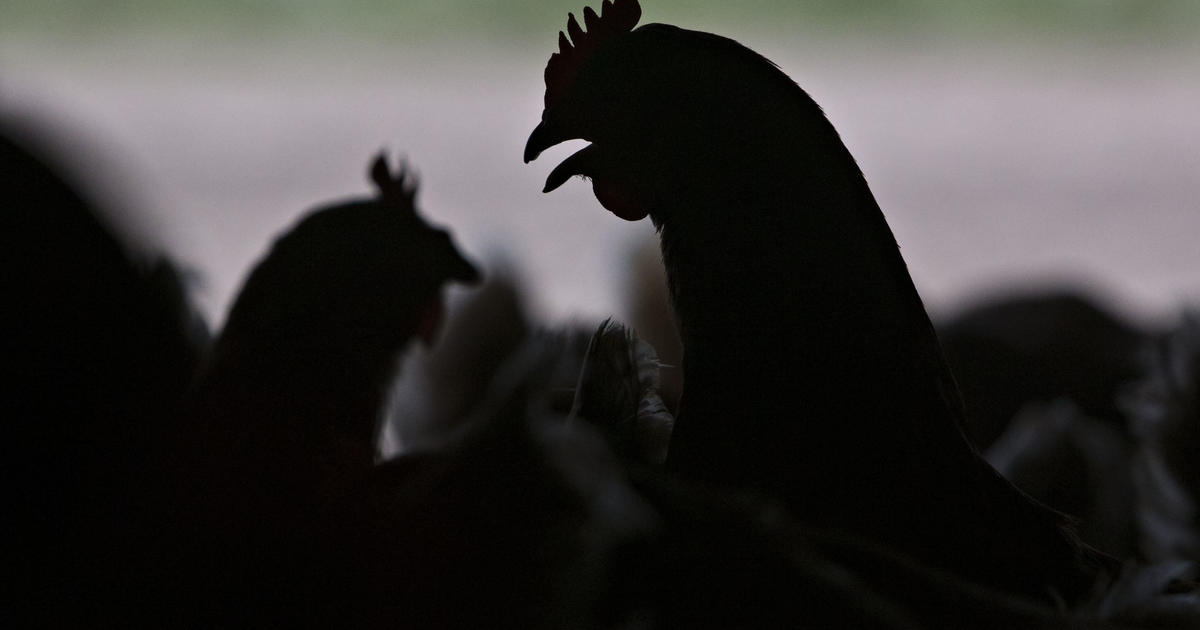The History Of The Flu
It really is the old chicken or the egg question. Nobody knows who got the flu first, and who passed it on.
Scientists donÂ't know if it was chickens, people or pigs. But as CBS News Sunday Morning Correspondent Martha Teichner reports, what they do know is that eggs are the place to grow the flu virus used to create vaccines.
At the New York Medical College lab of Dr. Edwin Kilbourne, he is not working on this year's vaccine, but next year's.
Like hurricanes, flu viruses form and change on the other side of the world, usually in Asia, long before they waft their way to the United States.
"Flu is very special," Dr. Kilbourne says. "It's the only virus that we know which is constantly evolving under our very eyes."
"It changes every year and presents us with a problem of having to create a new vaccine every year to meet the new challenge," he says.
One of the most respected flu experts in the world, Kilbourne has been chasing the flu virus for 50 years. He considers himself in a race with a killer.
"Flu could be a fatal disease; as a matter of fact [it] kills at least 20,000 people a year in the U.S.," he says.
That's even with an estimated 90 million Americans receiving flu shots. And this is not even for a bad flu season, but just an average one.
One of the worst flu strains cropped up in 1918, killing about half a million Americans and 40 million people worldwide.
Eighty years later, the horror of it has somehow gotten lost in the memory of World War I. But more soldiers died of the flu than on the battlefield.
Living together in close quarters, they were literally attacked in their beds. These young men got the sniffles one day and were often dead the next.
"People described military camps.…They say the bodies were stacked up like cordwood," says Gina Kolata, a New York Times science writer who has just written a book about the 1918 flu.
"I was stunned," she continues. "It was fascinating and chilling."
"And it was kind of scary, because you never thought that influenza, this common virus that's there every single year, could somehow turn into something that would be such a killer," she says.
Not just soldiers died. Most vulnerable were children younger than 15 and adults 20 to 40.
Old pictures of people wearing masks in public look comical today, but it wasn't funny then. It was terrifying. For every one person who died, about 100 got sick. Yet today, the 1918 flu isn't even mentioned in most history books.
The accounts that do survive are often of terrible family tragedies. Author Mary McCarthy wrote of the death of both her parents, leaving their four children orphans. She wrote:
"And though we were shut out from the knowledge of what had happened so close to us, just out of our hearing, a scandal of the gravest character...
...a coming and going of priests and undertakers and offins...
(Mama and Daddy, they assured us, had gone to get well in the hospital.)
Â…We became aware, even as we woke from our fevers, that everything, including ourselves was different."
West Virginia Senator Robert Byrd even ended up with a different name. He was born Cornelius Calvin Sail Jr. He wasn't even a year old when his mother died of the flu in November 1918 and he was turned over to his aunt and uncle.
"She told my father she wanted the Byrds to have me if she did not get well….She wanted the Byrds to raise me," Senator Byrd remembers.
"She said that I would someday become president of the United States," he says. "Well, she did get pretty close, but I'm glad she missed that."
Minnie McMullan is 83, healthy and active, but the flu changed everything for her as well.
"First my brother died and then the baby. ... She was a month old...and then my mother," says McMullan.
"And they thought I was dead so they put the sheet over me and rolled me out on the porch…and pretty soon I start coughing so...they took the sheet off," she says.
While scientists still don't know why the 1918 flu was such a killer, there's a very good chance they'll learn, thanks to the efforts of Dr. Jeffery Taubenberger.
He is a pathologist at the Armed Forces Institute of Pathology in Washington, but Taubenberger considers himself a detective investigating a murder mystery: what made the 1918 flu so deadly.
Taubenberger knew that the U.S. government has been collecting tissue samples from dead soldiers ever since President Abraham Lincoln ordered an archive be kept. There are now 5 million little wax blocks.
In an institute building, there are 30 million slides. Taubenberger thought that maybe somewhere in one of these amazing warehouses he could find a sample that contained the 1918 flu virus. He found two.
But this wasnÂ't the first time a scientist has made such an attempt. Dr. Johan Hultin, a retired pathologist from San Francisco, tried and failed to extract the virus in 1951 from 1918 flu victims buried near Brevig, Alaska.
In 1997 Hultin read about Taubenberger's work, wrote to him and asked if he should try again. Taubenberger wrote back yes. "I wish you good luck in your trip," he wrote.
This time upon excavating a mass grave site, Hultin found the bodies decomposed, except for that of one obese woman whom he called Lucy.
"So I thought my Lucy will shed light on the 1918 mysteries of the…pandemic virus," says Hultin. "That was a great moment."
The virus in her lung tissue matched that of the two soldiers found by Taubenberger.
Now Taubenberger and his team of researchers are mapping the gene structure of the virus, hoping their work will ultimately reveal why the strain was so fatal.
"At least we have identified the fingerprints of the murderer, so to speak, and we're able to now look at this virus," Taubenberger explais.
"Is it possible that a pandemic could come along or the flu could come along and once again kill 40 million people? Yes, unfortunately, I think that it is possible," he says.
The Asian flu swept the world in 1957, the Hong Kong flu in 1968, and in 1976 the swine flu looked enough like the 1918 virus that President Ford ordered the inoculation of the entire U.S. population.
What he didn't know was that several people, possibly by coincidence, would come down with a debilitating nerve disease called Guillain Barre syndrome after having flu shots, and there was no epidemic.
The fallout was so costly that the episode has guided how the U.S. government has reacted to flu scares ever since.
"We have to be aware. We have to be concerned. We have to have better surveillance but we have to do it step by step," says Kilbourne. He is in favor of a government alert system currently being developed.
"You have a hurricane watch. Your hurricane watch equivalent with flu is when a new virus appears and infects a couple of people,...and then that's serious," he says.
It was serious in 1997 when chickens and humans started dying of the same flu in Hong Kong. Was this 1918 all over again?
Public health officials ordered that every chicken in the city be killed, 1.2 million birds. Again there was no epidemic, but was this slaughter the reason?
"The only definition of virulence is when people start to die," Kilbourne says.
Then the question is whether there's time to begin making a vaccine and circulating it before the infection spreads all over the world.
At this point most of us can only get a flu shot and hope that's good enough.



